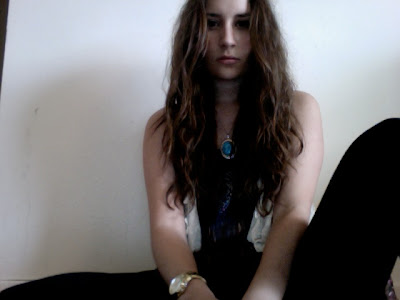Assignment 4 Virtual Essay:
Photographer Comparisons
The photographer I have decided to compare is Patrick Demarchelier. He was born in France in the year 1943 and moved to New York City in 1975. He started working as a freelance fashion photographer and learning about fashion photography with Henri Cartier-Bresson among others. He eventually started working for Vogue Magazine and Harper’s Bazaar. Demarchelier has continues to work for Vogue and many other magazines and designers such as Dior, Louis Vuitton, Chanel, Yves Saint Laurent, Ralph Lauren, Marc Jacobs, Prada, Gucci, Giorgio Armani, Jean Paul Gaultier, Michael Kors, Versace, and many more.
Today Patrick Demarchelier’s work is has grown to be amazing over the years to say the least. Nearly every fashion magazine and fashion designer has worked with him, and he produces magnificent results each time. His work is always able to show the clothing being advertised in a unique and different way each time. He tells a story with each fashion spread he creates. He’s photos are strong, bold and interesting in all aspects of the photo, the clothing, the setting, the models and the hair and make-up. He is able to capture a feeling, a moment and a lifestyle in every photo he takes, no matter what the setting or the subject matter is. He is a master as capturing beauty in everything and everyone, whether he is taking photos for a spread in a grungy wear house, in a lovely garden, or in paradise he can always capture the beauty.
Here are a few of his photographs he has taken for various Vogues over the years:
 |
| Patrick Demarchelier |
 |
| Patrick Demarchelier |
 |
| Patrick Demarchelier |
 |
| Patrick Demarchelier |
 |
| Patrick Demarchelier |
 |
| Patrick Demarchelier |
 |
| Patrick Demarchelier |
There are three photographers I wanted to focus on when it comes to similarities to the work of Patrick Demarchelier, one is Donald McPherson the second is Nigel Barker and the third is Renata Keveh.
Donald McPherson is a high profile fashion photograph as is Demarchelier. He is known for his fine taste in fashion and is extremely famous in Europe. He has worked with some extrordinary people like Tom Cruise, Keira Knightly, Gwen Stefani and many others. He has also worked with magazines such as Vogue, Vanity Fair, and Harper’s Bazaar. All of these qualities have resemblance to Patrick Demarchelier, he to has worked with the same magazines and extraordinary people. Their style in photography is similar as well besides from the fact that they are fashion photographers. They both are able to capture the beauty in any scenario, creating bold and strong photographs that are unforgettable.
Nigel Barker started off as a model which introduced him to the world of fashion and fashion photography. When he finished modeling he pursued fashion photography and is now a world renowned fashion photographer. Nigel started to work out of his own photography studio and his photographs have been used for some of the best designers in the fashion industry. His photography style is similar to that of Patrick Demarchelier and I am sure Patrick is an inspiration to him. Barker’s photographers are always edgy and interesting. He uses props and interesting scenery to create a mood and a story, as does Demarchelier.
Renata Keveh is a Toronto based photographer who is very well respected. Her style ranges from meticulously stylized to soft and romantic like Patrick Demarchelier. Both these photographers are able to find and create beauty in all kinds of places, whether it is a garbage shoot, or a shoot on a beautiful beach. Her photos are always beautiful, bold and interesting like Demarchelier’s. Keveh is currently working in North America, and internationally. She has worked with magazines like Lush, Unfair, Heaven, and Luxsure Magazine, Demarchelier also had worked with many magazine publications.
It is important as a fashion photographer to be able to create a story with the photography spreads being created and the single photography being taken as well. The photographer needs to be able to sell the clothing and a lifestyle as well as set a mood and make the photographs interesting and aesthetically pleasing. These are the main goals of being a fashion photographer and without these skills there would be failure. These four photographers have all of these skills and qualities and have been extremely successful in their trade.
Here are some photographs by Donald McPherson, Nigel Barker, and Renata Kevah I found to be similar to the work of Patrick Damarchelier:
 |
| Donald McPherson |
 |
| Donald McPherson |
 |
| Nigel Barker |
 |
| Nigel Barker |
 |
| Renata Keveh |
 |
| Renata Keveh |
 |
| Renata Keveh |































